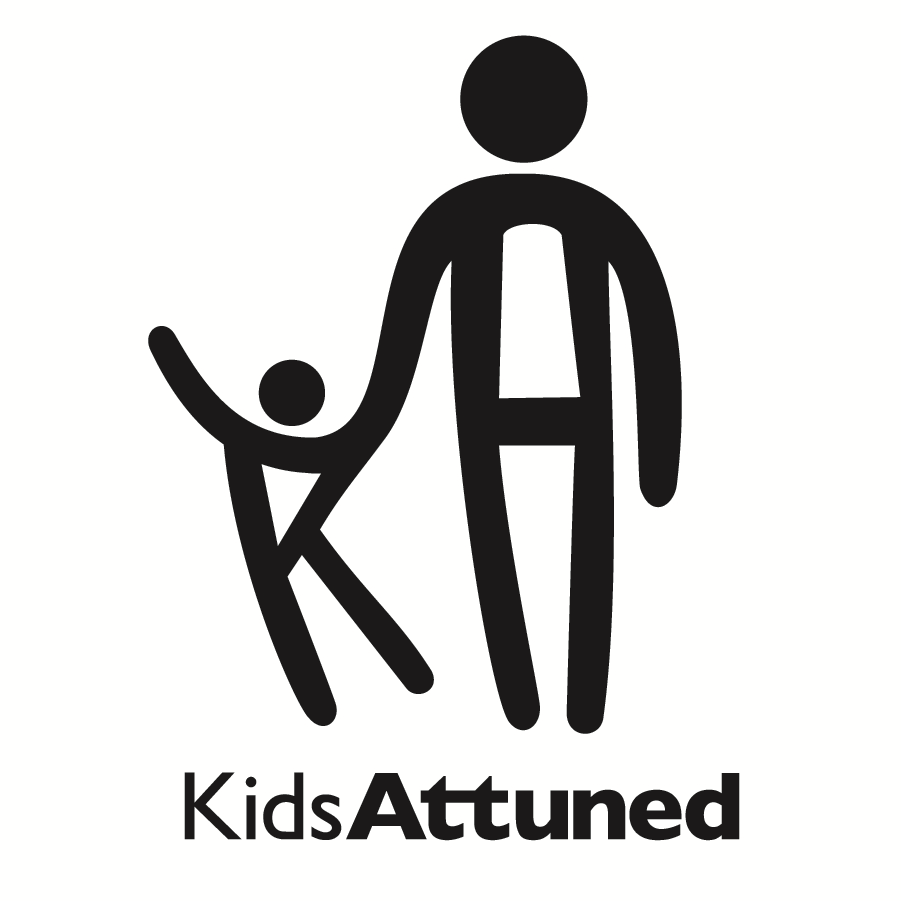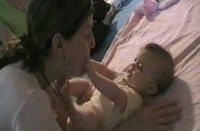The tie between a baby and his caregiver is universally
considered a unique and arguably the most intimate of all human relationships. While this special contact certainly feels wondrous, and at times indefinable, attachment is actually woven together through countless shared connections between caregiver and baby. A variety of researchers have produced detailed evidence of the inner workings of these moment-by-moment exchanges. When these microscopic studies are reviewed collectively, we appreciate anew that caregiver and newborn form a dyad from birth and become joined inextricably in both a physiological and emotional union.
This article will especially emphasize that infants are endowed with several instrumental abilities that strongly influence the phases and overall course of early attachment with the caregiver. Since the action of attachment requires a unique partnership and common desire to capture each other’s physical and emotional essence, imagining their work as an ongoing “Dance” brings alive the joint metamorphosis. As we delve into the progressive, multi-textured nature of their bond, viewing caregiver and baby as dancers designing their private, inventive choreography hopefully will crystallize our perspective of the “wondrous” coherent story of attachment.
As the caregiver and newborn first encounter each other, he is flooded by two primal realizations. First, he is shocked at “being alive” in a crude, open world. In varying degrees, the baby is undone by this jarring entry into a boundless, cold space. Attachment begins here as soon as mother and infant feel each other breathing when he first lays on her. Simultaneously, he senses he is entirely vulnerable having been torn away from his warm, nourishing environs. So “staying alive” overwhelms him as well. He is wholly driven to obtain protection, nourishment, calm, and comfort. He molds his body to hers, sucks involuntarily, and searches skin-to-skin for his mother’s heartbeat and breast. The caregiver enfolds her baby and feeds him thus re-creating a new, exclusive enclosure for them. At the inception of their relationship, his various cravings or sensory disturbances produce escalating, distressful cries until the corporal imbalance is corrected.
By reducing his alarm at being thrust into their external world, mother and infant have started the critical, innate process of Co-Regulation; i.e. producing in the infant a consistent state of physiological equilibrium.
He is again enveloped (like in the uterus), as his agitation is subdued. First and foremost their bodies link them. At the same time, the caregiver strives to fulfill her baby’s basic needs by studying his cries, movements, states of arousal, facial expressions, and more to respond accordingly. The infant’s instinctive reactions convey how he wants to be held, touched, moved, and comforted. The work of Co-Regulation now is a more active, goal-oriented procedure to satiate the infant’s basic needs and reduce his apprehension. The baby’s vital somatic necessities and mother’s instrumental actions dictate this aspect of Attachment-building.
In the language of “Dance”, each seeks to learn the other’s ‘steps’
with unending touching, gazing, and murmuring to find the other. One might say this is a period of trial and error as they aim for more favorable outcomes. The infant’s initial expressions are apt to be somewhat erratic and indecipherable and the mother muddles to decode and respond successfully.
At the moment he reaches a quieter condition, the infant steadily reveals he is an innately social creature. He watches, smells, tastes, listens, or simply gazes at his mother. The newborn not only prefers humans to objects but is most drawn to his caregiver, her face, body, and voice. In addition, the newborn is able to track the mother’s whereabouts by visually following her around the room to maintain her tangible presence. At each of these intervals, his caregiver witnesses that, when he is collected and observant, he can participate more and more in sharing attention with each other. While newborns were once viewed as possessing no organic abilities, we now know the infant is born with a ready-made social appetite to seek out his primary relationships (validated by research). As the infant’s essential needs are being met, his curiosity about and awareness of his mother and father are becoming more intent as their meetings become more frequent and focused.
Further, infant studies have demonstrated that the infant is also equipped with inner competencies
that cement his nascent Attachment to his caregiver. While “taking mother in”, he also is recording her physical features and mannerisms into a crude, evolving multi-sensory image from which he soon can distinguish her facial expressions, the scent of her skin, and more. In all likelihood, the shaped images of mother serve the dual purposes of reinforcing in him she is his constant, available guardian and an attractive being to whom he increasingly gravitates. There is no doubt that it is the dyad’s complementary capacities that enable Co-Regulation and the Attachment to mature. However, the infant’s inborn capacity to “map” his mother allows us to fully grasp how involved he is in laying the bedrock for his primary relationship and setting the stage for deepening their bond as well.
Simultaneously, the mother endeavors and successfully defines her infant’s corporal needs and traits which include his sleep-wake cycles, optimal exposure to the outside world, basic homeostasis, and the most efficient ways to restore him to a composed, alert state. He responds more contentedly signaling she is progressively “in tune with” his intrinsic requirements. As the infant’s contentment grows, his curiosity about his mother predictably intensifies into fascination. These intrinsic skills assist him to remain in a composed state, sustain contact with mother, and move towards co-creating an emotional attachment.
As ‘dancers’, they are inventing their own elementary, concordant set of movements. When he steps back, she steps forward. In addition, with more harmonious ‘steps’ as dance partners, they no longer must concentrate on learning corresponding motions. Instead, they progressively embellish their choreography with “feeling” for each other. They look warmly into each other’s eyes, move gracefully, and tenderly hold each other. They confidently sense more affectionate sequences and intonations will follow.
While this primary “Dance” is shaping up, the baby is internally assembling a more complex chart. He is codifying their efficient nurturing practices into consistent patterns that are growing out of the countless moments of his ‘” wants” being satiated. He not only follows their emerging schemes but, more importantly, he comes to know his caregiver will do so as well; i.e. the infant comes to anticipate his mother will take good care of him. By developing this confidence in his caregiver, his instinctual alarm gradually recedes as he is assured mother will soon remedy whatever bothers him. For instance, the three-month-old wakes from a nap and wants to be swaddled in mother’s arms. He squawks and hears mother’s voice from another room saying, “Is that my little guy waking up?” His cries weaken (but do not intensify) and, as mother’s steps come closer, he smiles and looks towards the door. As mother reaches to pick him up, their eyes and smiles warmly greet each other. Now, mother’s call is enough for her baby to feel he will soon be in her arms.
The infant’s rising certainty in his caregiver’s sensitivity expands the definition of Co-Regulation
and augments the quality of their bond. It is built by external observations, action and reply as well as the internal systematic operations of bother caregiver AND baby. By 2-4 months, he expects that the caregiver will dependably attend to him. As the baby entrusts mother with his care, he cultivates inner roots to maintain some level of equilibrium until mother arrives. Impelled by instinctive encounters, shaped by action and response, and consolidated by sensory-based, coherent images mother and infant have sculpted a Secure Attachment.
It must be underlined here that the baby’s previously unimagined dual capacities (to “map” mother’s substantial presence and their proven customs of basic care) have instrumentally contributed to the dyad’s attainment of basic Co-Regulation and establishment of a primary Attachment. The infant’s remarkable accomplishments illuminate that the infant must “make sense” of his every experience in order to acclimate to his stark existence.
By co-creating the caregiver and baby’s sanctuary, the baby then spontaneously starts to embark on developing another skill. He spontaneously uncovers rudimentary ways to Self Regulate by sucking his thumb or pacifier, holding a favorite blanket, or snuggling up in the corner of his crib to settle and soothe himself. He is incrementally heading into an unknown realm of developing a maturing range of autonomous functions; i.e. he can execute some age-appropriate functions with less assistance from his caregiver. But first and foremost, as calm & trust predominates, their urgent connection for the infant’s survival predictably ebbs and now is primarily fueled by a budding, enveloping reciprocal fascination with the other.
The infant notices and enjoys mother’s devotion to him and blossoms into shared delight with each other. While diapering on the changing table, they are mutually thrilled by each other’s warm smiles, spirited squeals, and pleasurable touch. Mother echoes her baby’s gestures and sounds while he exuberantly squirms his body. This shared joy is producing emotional electricity that soon transforms into an emotionally charged field between them. Moments together are colored by warm sensations of love and devotion. At its height, they swim in a blissful pool and time stands still. Where previously being held produced somatic equilibrium, it has burst into an unmistakable embrace.
Hence, every encounter for the infant takes on fresh meaning as mother and infant meet anew and redefine their partnership. The nature of the attachment is now founded not only on trust but enveloping love. In fervently seeking to express and extend their joint exhilaration, mother and baby begin an uneven exchange of affectionate gestures. They are gradually constructing their own language of endearment (3-6 months).
Enter the text or HTML code here

